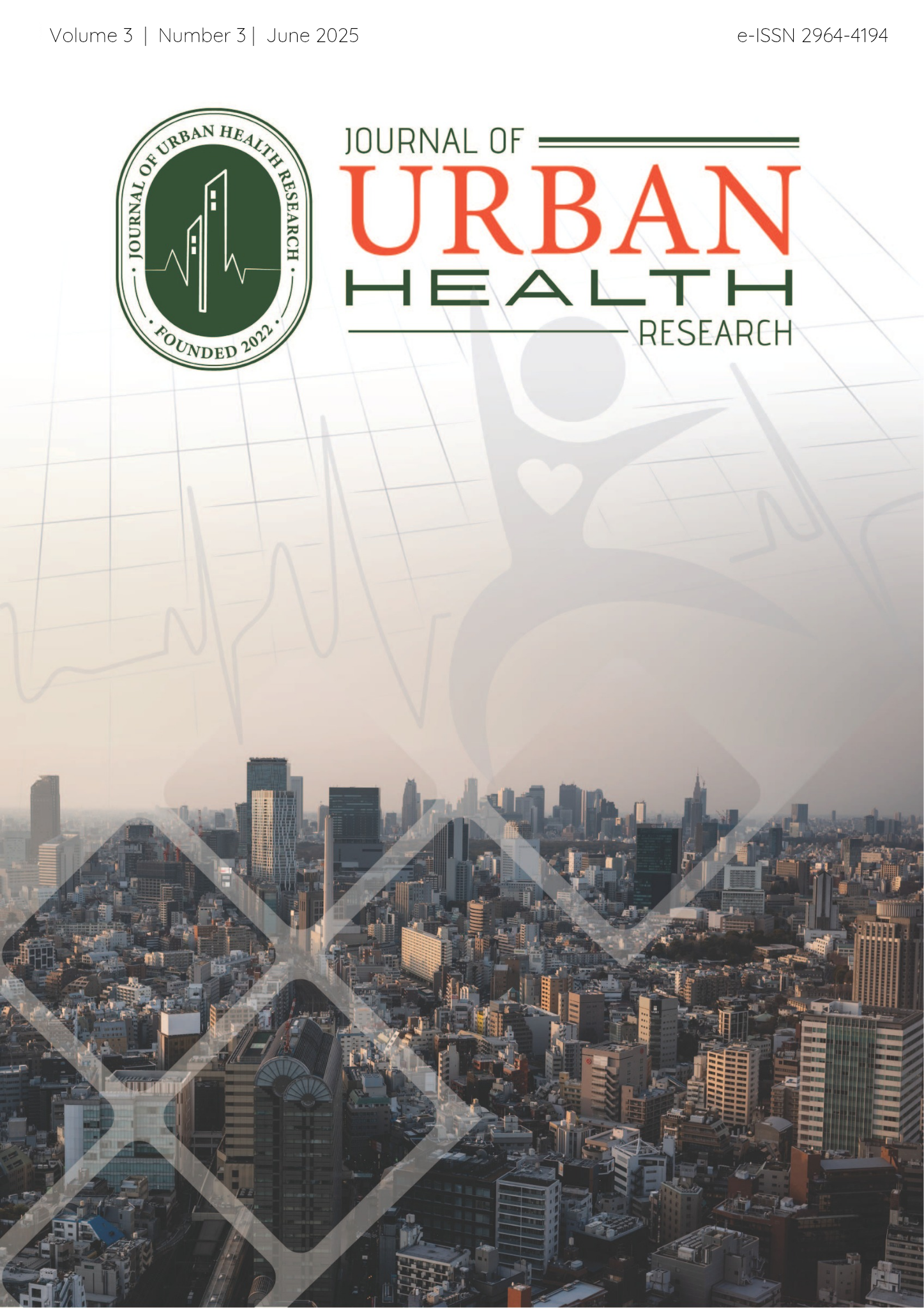Self-Protection against UV Exposure: Behavioral Patterns and Phototype Correlations among Medical Students in North Jakarta, Indonesia
DOI:
https://doi.org/10.25170/juhr.v3i3.6631Keywords:
Medical Students, sun protective behavior, Fitzpatrick's skin typeAbstract
Introduction: Exposure to ultraviolet (UV) rays can cause significant skin damage, including cancer. This study examines sun protection behaviors among medical students in North Jakarta, despite their knowledge of UV risks, and correlates these behaviors with Fitzpatrick skin types. Understanding these behaviors helps inform targeted interventions to promote sun safety among future healthcare professionals.
Methods: An observational study with a cross-sectional approached on 230 respondents consisting of medical students, conducted through online questionnaires within 3-month period on a systematic random sampling method. Data on demographic data, Fitzpatrick skin type scale, and 5 questions on self-protection behavior obtained was analyzed using Spearman’s rank correlation and chi-square analysis, p < 0.05 indicating a significant relationship.
Results: Type III, IV, and V are the most common Fitzpatrick’s phototypes found on subjects where 69.6% of students had low sun protection behavior. Male exhibit lower sun protection behavior than female, and there was no relationship between students’ Fitzpatrick's skin type and sun protection behavior, (p = 0.112).
Conclusions: Sun protection behavior among medical students at FKIK UAJ is low. There is a correlation between gender and sun protection behavior, but no correlation between Fitzpatrick's skin type and sun protection behavior among the students. The study reveals that medical students, especially males, exhibit low sun protection behaviors despite their knowledge of UV risks, emphasizing the need for targeted educational interventions. These findings are crucial for medical education and public health, making them relevant for journals focused on preventive medicine, dermatology, and medical education.
References
1.Lan CE. Effects and interactions of increased environmental temperature and UV radiation on photoageing and photocarcinogenesis of the skin. ExpDermatol. 2019;28:23.
2.Durand C, Lamy A, Richard JB, Saboni L, Cousson-Gélie F, Catelinois O, Bord A, Lepage B, Mouly D, Delpierre C. Influence of social and psychosocial factors on summer vacationers' sun protection behaviors, the PRISME study, France. Int J Public Health. 2022.
3.Scherer D, Kumar R. Genetics of pigmentation in skin cancer--a review. Mutat Res. 2010;705(2):141-153.
4.Fitzpatrick TB. The validity and practicality of sun-reactive skin types I through VI. Arch Dermatol. 1988;124(6):869-71.
5.Dubin CE, Kimmel GW, Hashim PW, Nia JK, Zeichner JA. Objective evaluation of skin sensitivity across Fitzpatrick skin types. J Drugs Dermatol. 2020 ;19(7):699701.
6.Novitasari T, Prajitno S, Indramaya DM. Behavior of sunscreen usage among medical students. Berkala Ilmu Kesehatan Kulit dan Kelamin. 2020;32(3):174.
7.Ponce S, Jódar A, Borrego L, Saavedra P. Behaviors, attitudes, and knowledge related to sun exposure among medical students at the Universidad de Las Palmas de Gran Canaria. Actas Dermosifiliogr (Engl Ed). 2019;110(5):372-384.
8.Gupta V, Sharma V. Skin typing: Fitzpatrick grading and others. Clinics in Dermatology. 2019;37(5):430-436.
9.Okoji UK, Taylor SC, Lipoff JB. Equity in skin typing: why it is time to replace the Fitzpatrick scale. Br J Dermatol. 2021;185(1):198-199.
10.Harsh S, Patil SB. Facial laser surgery. Journal of Surgical Dermatology. 2017;2:141.
11.Goon P, Banfield C, Bello O, Levell N. Skin cancers in skin types IV–VI: does the Fitzpatrick scale give a false sense of security? Skin Health and Disease. 2021;1(3).
12.Guerra KC, Zafar N, Crane JS. Skin cancer prevention. Treasure Island (FL): StatPearls Publishing; 2023.
13.Patel A, Zasrendah T, Wren T, Daoud A, Campbell K, Nagle K et al. A characterization of sun protection attitudes and behaviors among children andadolescents in the United States. Preventive Medicine Reports. 2019;16:100988.
14.Holman DM, Ding H, Guy GP Jr, Watson M, Hartman AM, Perna FM. Prevalence of sun protection use and sunburn and association of demographic and behaviorial characteristics with sunburn among US adults. JAMA Dermatol. 2018;154(5):561568.
15.Nahar VK, Wilkerson AH, Ghafari G, Martin B, Black WH, Boyas JF, et al. Skin cancer knowledge, attitudes, beliefs, and prevention practices among medical students: A systematic search and literature review. International Journal of Women's Dermatology. 2018;4(3):139–49.
16.Bahashwan E. Awareness and knowledge of sun exposure and use of sunscreen among adults in Aseer region, Saudi Arabia. Saudi Pharm J. 2024 May;32(5):102019.
17. Memon MM, Manzoor M, Ashrafi MM, Kumar S, Ul Haq Z, Irfan S, et al. Prevalence and Predictors of the Use of Sunscreen Amongst Medical Students: A Multi-center Cross-sectional Study. Cureus. 2019;11(6):e4926.
18. Chen T, Yuan C, Zhao M. Women's skin care behaviors: How to influence sunscreen use. J Tissue Viability. 2024 Jun 28:S0965-206X(24)00090-1.
19. Diehl K, Schneider S, Seuffert S, Greinert R, Görig T. Who Are the Nonusers of Sunscreen, and What Are Their Reasons? Development of a New Item Set. J Cancer Educ. 2021 Oct;36(5):1045-1053.
20.Reis-Mansur MCPP, da Luz BG, dos Santos EP. Consumer Behavior, Skin Phototype, Sunscreens, and Tools for Photoprotection: A Review. Cosmetics. 2023; 10(2):39.

Downloads
Published
Issue
Section
License
Copyright (c) 2025 Jesslyn Alvina, Zita Arieselia, Regina Regina

This work is licensed under a Creative Commons Attribution-NonCommercial-ShareAlike 4.0 International License.













